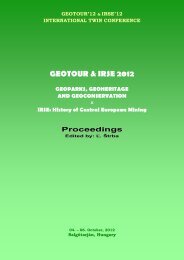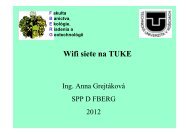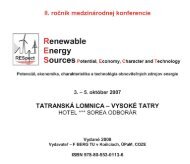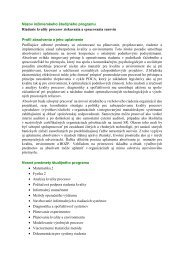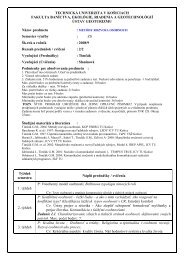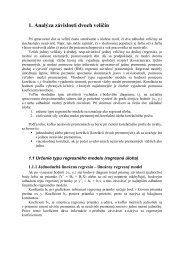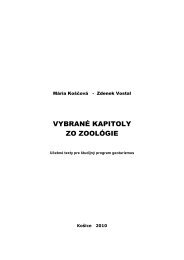GEOTOUR & IRSE 2012.pdf - Fakulta BERG - TUKE
GEOTOUR & IRSE 2012.pdf - Fakulta BERG - TUKE
GEOTOUR & IRSE 2012.pdf - Fakulta BERG - TUKE
You also want an ePaper? Increase the reach of your titles
YUMPU automatically turns print PDFs into web optimized ePapers that Google loves.
<strong>GEOTOUR</strong> & <strong>IRSE</strong> 2012<br />
HYDROGEOLOGICAL FIELD TRIP ON THE OPEN KARST OF BÜKK MOUNTAINS<br />
AND ON THE THERMALKARST OF BÜKK REGION (NORTH HUNGARY)<br />
László Lénárt<br />
University of Miskolc<br />
e-mail: hgll@uni-miskolc.hu<br />
SUMMARY<br />
Based on the EU Water Framework Directive, out of the 185 subsurface water bodies in Hungary, 14<br />
are located under uncovered karst, and 15 are located under covered karst. The total areas are 9.200<br />
and 22.300 km 2 respectively, which accounts for 34 % of the area of the entire country. There are two<br />
open karst areas in the Bükk Mountains and there are two thermal karst water bodies in relation with<br />
the Bükk Mountains. The Bükk HU_kt.2.1 thermal karst water body is the second largest in Hungary<br />
with its 4.300 km 2 area.<br />
Cold and tepid water karst springs can be found in the Bükk and at its brim. Tepid and warm karst<br />
water springs are located at its surroundings; and there are wells yielding warm and hot water. There<br />
are over 1000 shaft caves, sinkholes, spring caves and caves with entrances at both ends in the Bükk<br />
Mountains. Many dolines can be found in the Bükk as well; in certain areas their number is high.<br />
Also, there are a number of canyons in the Bükk Mountains. Flowing water bodies on the surface are<br />
most typical at the rim of the mountains. These creeks have smaller and larger waterfalls. There aren‟t<br />
many lakes in the area.<br />
The most significant hydrogeological structures are the springs, sinkholes, dolines, caves and<br />
waterfalls in the Bükk Mountains. In the surrounding area the most important are the rivers, lakes,<br />
wells, including the thermal karst water yielded by the wells, and the deposits created by it. Some of<br />
these still exist, but some have disappeared due to human activity or natural forces.<br />
The thermal karst water is mainly mineral or medicinal water, its usage is recreational. There is<br />
evidence that thermal karst water had been used for bathing even before the times of the Turkish<br />
occupation.<br />
INTRODUCTION<br />
There are thousands of hydrogeological objects in the Bükk thermal karst and Bükk<br />
mountains, proving very interesting for both professionals and laymen alike.<br />
It is not possible to give a detailed introduction of all of them in present paper due to scope<br />
limitations, but we will provide a comprehensive overview and a few examples.<br />
Unfortunately, due to the same reason, we can't attach maps showing the exact location of the<br />
karst hydrogeological objects discussed but we are including a few photographs of them. In<br />
our opinion, a detailed discussion should be done as an individual publication, as we've done<br />
so in the past. (Since the number of curiosities have increased and the ways of publication are<br />
much smoother today, it is even more reasonable to create a detailed publication of our<br />
material.)<br />
Most of the hydrogeological objects in the Bükk and its area are strongly related to karst<br />
water, so we will mainly discuss karst hydrogeological natural values.<br />
Let‟s follow the path of water and list those natural value groups and their members that are<br />
worthy of our attention. (Please note that to physically approach these objects can be at times<br />
difficult. There are some which can be viewed from a car, but in some cases a long hike is<br />
needed, or we would have to go underground into a cave. Most of these spectacularities are<br />
free to view but in some instances it must be paid for.) In many cases, for example regarding<br />
wells or springs, it is not the water itself that we will see but the natural formations the water<br />
created, or the structures made by humans near or on top of the upwelling water.<br />
73



